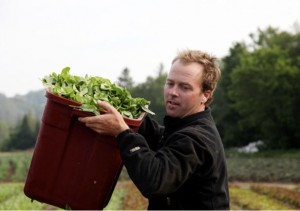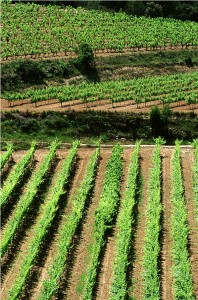 The town of Hardwick, Vt., has been celebrated as the scene of a local food revival. In recent years, lots of small farms have started up nearby. Tom Stearns, president of a local organic seed company called High Mowing Seeds, says there are more organic farms per capita within 10 miles of Hardwick than anywhere else in the world. There’s also a thriving local grocery co-op; a busy farmer’s market; even a classy restaurant — Claire’s — where almost anything you eat grew or grazed on land nearby.
The town of Hardwick, Vt., has been celebrated as the scene of a local food revival. In recent years, lots of small farms have started up nearby. Tom Stearns, president of a local organic seed company called High Mowing Seeds, says there are more organic farms per capita within 10 miles of Hardwick than anywhere else in the world. There’s also a thriving local grocery co-op; a busy farmer’s market; even a classy restaurant — Claire’s — where almost anything you eat grew or grazed on land nearby.
But it was Ben Hewitt, as much as anyone, who really put Hardwick and its local food scene on the map. He’s a writer and a back-to-the-land activist himself. He lives on 40 acres near Cabot, down the road from Hardwick, with his wife, their two home-schooled children, and an assortment of pigs, cows and a very friendly dog named Daisy.
Hewitt saw what was happening in Hardwick, and it struck him as unusual, even odd. “Here’s this town: Unemployment rate 40 percent higher than the Vermont state average; median income 25 percent lower; and then there was this thing happening around so-called sustainable ag and local food!” Hewitt says. So Hewitt wrote a book about Hardwick: The Town That Food Saved. Source: NPR By Dan Charles - Listen Here








